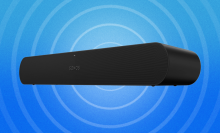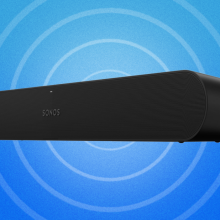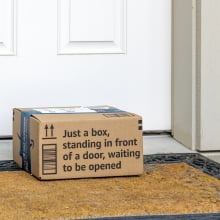No longer is it necessary to tote around a set of paint pots or a heavy canvas in order to create art; technology has digitized just about every art form. From 3D-printed sculptures to Photoshopped pictures, art is ever-evolving alongside our increasingly tech-savvy world. But though there are debates over whether newfangled concepts can truly be considered works of art (cough NFTs cough), it's undeniable that technology has made more traditional forms of art far more accessible.
Digital art is also more convenient for employers, resulting in many professional graphic designers and illustrators being hired to do their work on a computer instead of on paper, which in turn influences the aesthetic of marketing and journalism alike. Whole communities have grown around the digital art space — Deviantart, Pixiv, and, of course Tumblr. (The last one is the most popular, though it hosts way more than just digital art, including text posts, movie screengrabs, and soundbites.)
Digital tools allow artists to simulate a variety of mediums using the same tools: a stylus, a touch-sensitive pad, and some creative software like Adobe Fresco. That flexibility, in addition to quick turnarounds and a digitized end product, is what makes digital art so appealing from a commercial perspective.
Of course, the styluses and pads in question can cost quite a bit — and that's assuming you have a tablet or a laptop to use them with, if necessary. However, this is in contrast to the physical world, where even if you were to be more economical with paints or paper, the various drafts and ruined works that a simple mistake can result in really add up. And that's just with one medium — investing in oil paints, acrylic paints, watercolors, pastels, graphite pencils, charcoal... those all cost money, and can quickly be used up. So when you weigh a one-off investment that provides access to virtually any kind of creative medium (as well as the panacea that is the undo button) against the more exacting, prep-heavy work of physical drawing, there can be a real payoff.
Why use a drawing tablet?
The physical tools, plus your software, will affect how well you're able to translate your drawing skills to the screen, or, if you're a total beginner, the control you have over your artistic process. Different software will offer different mediums and editing options (Adobe Illustrator or Photoshop are always safe bets, but depending on what you want, there are alternatives that might be better suited). No matter which software you choose, you probably need some kind of a tablet and a digital pen. Have you ever tried signing your name on a trackpad with your finger? If you find it difficult even to just replicate a signature you've written hundreds of times with a mouse or laptop trackpad, think of the pain it would be to attempt to do fine line work in the exact shapes and places you want. So a pen of some sort and an accompanying tablet are essential — but what should you consider when looking into which model to invest in?
What kinds of tablets are there?
Most drawing tablets can be categorized into one of three types: graphics tablets, pen displays, and tablet computers.
Graphics Tablet: The simplest of the bunch, essentially a touch-sensitive pad with a pen that you can plug into your computer so you have more control over your cursor (and therefore your digital pen) while drawing. The movement of your stylus on the pad will be reflected on your computer screen.
Pen Display: Probably what most people think of in terms of drawing tablets, these panels will let you see the tracks of your stylus or pen as you go. Instead of having to plug into a computer, these are standalone tablets able to produce art themselves.
Tablet Computer: iPads and their ilk — powerful minicomputers for which drawing is just one of many other functions. Often their use for art will require purchase of a pen or accessory of some sort for better control, and the creative software of your choice.
What to think about when choosing a tablet?
First and foremost, take account of your skill level. If you're not entirely comfortable drawing without looking at your hand moving across the paper, you might find a graphics tablet a bit difficult to use, since to keep track of your work you have to watch the monitor while moving your hand at the same time to draw.
Another consideration is the sensitivity of your tablet. Some might prefer a super touch-sensitive screen that will pick up on every feather-light brush of the pen, while others will want a less responsive tablet that they can press harder on to keep a line steadier, or prevent accidental marks (another perk of digital art though — there's always an undo button, unlike smudges on a piece of paper).
The feel of a tablet is also crucial. Obviously, it won't feel the same as drawing on paper, but the material and make of the tablet can determine how much give, friction, and glide it has. A tablet's tactile aspect is very important to consider, especially if you're someone who is very particular about your setup.
And, of course, size and heft is one of the most important features of a tablet to keep in mind; whether you want a tiny, portable thing to carry everywhere with you for sketching or a heavy-duty unit equipped with loads of extra features that will stay on your desk for daily illustration work, it's important to choose a model that will suit your needs.
Not to mention, the size of a tablet typically corresponds to the dimensions of its active area (i.e. the part of the tablet you can actually draw on), so in addition to portability, have a think about the size and detail of the work you intend to do. It's never fun to run out of drawing space; while this is another area in which digital art has advantages over traditional mediums (most software will let you zoom into a drawing and reorient your tablet to the boundaries of the specified area), if you want to keep the whole piece on screen while working, a tablet that will fit your whole drawing within its active area is preferable.
Besides its physical aspects, a tablet's screen is critical to its performance. If you're trying to create photorealistic works of art, a high resolution is probably worth the price. On the other hand, if you just want to practice your drawing skills without fear of losing your work, a run-of-the-mill tablet with lower resolution is going to be more cost-effective. Plus, the thickness of a screen will affect parallax — the shifting of a line or object based on a person's perspective, caused by the distance (however minute) between pen and interface, separated by the screen. You'll want to minimize parallax to keep your perspective consistent.
Another important feature to shop for is tracking speed, which basically means lag time between stroke of your pen and the corresponding line showing up on screen. The higher the tracking speed (measured in PPS, points per second), the less the lag, and the more instant the result. And while lag is annoying at the best of times even just in things like loading our email inboxes, it can make finer work like drawing simply impossible.
And if you want a tablet that isn't a computer in and of itself, you're probably going to need to make sure that it connects to the computer you already have. If it doesn't, you'll need to purchase an adapter.
When you buy a tablet, keep in mind that you're also buying the pen that comes with it, unless you already have one (that you've checked is compatible with your new tablet) or you plan on buying one separately. Be sure to choose a stylus with a grip you like and features you need. Plus, styluses have their own distinct types: Battery-powered (thicker, needs extra batteries), rechargeable (slimmer, less reliable), and the newest EMR (wireless charging from tablet itself).
And most of all, keep in mind that the operating system your tablet runs on will determine what apps you can use, and therefore the functionality — the ever-popular app Procreate, for example, isn't available on tablets that run on Windows, which makes Apple tablets a good option if that's your preferred platform.
With all this said, Mashable Illustrator Bob Al-Greene reminds us: "The technical limitations [of the tablet] don't necessarily have anything to do with the quality of the art you can make with it... The quality of the artist, not the technology, dictates the final product."
It's always a good idea to try a product like this, where the feel of it is extremely important, in person, but here are some ideas for you to at least start to get an idea of the kind of tablet you might want:










